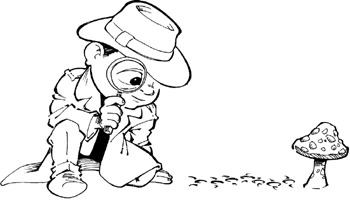Chapter 12: Game Analysis: Loom
Overview
Designed by Brian Moriarty Released in 1990

For 1990, the year it was released, Loom was a decidedly different type of adventure game. Though it had many gameplay similarities to graphical adventure games that had been released previously by LucasArts, Loom endeavored to reduce the adventure game to its core mechanics from a storytelling standpoint and to cut away all that was extraneous. Looking in the manual, one finds that the game s authors were keenly aware that they were creating something different, as the following excerpt from the About Loom section indicates:
Loom is unlike traditional adventure games in many ways. Its goal is to let you participate in the unfolding of a rich, thought-provoking fantasy. It is neither a role-playing game (although it incorporates elements of role-playing), nor a collection of brainteasers . Its simple mysteries are designed to engage your imagination and draw you deeper into the story, not to frustrate you or increase the amount of time it takes to finish.
Later on in the manual is a section titled Our Game Design Philosophy, which contains a statement reprinted in a number of LucasArts adventure game manuals of the time. In it one finds still more references to how unique Loom and the LucasArts games were:
We believe that you buy our games to be entertained, not to be whacked over the head every time you make a mistake. So we don t bring the game to a screeching halt when you poke your nose into a place you haven t visited before. Unlike conventional computer adventures , you won t find yourself accidentally stepping off the path , or dying because you ve picked up a sharp object.
We think you d prefer to solve the game s mysteries by exploring and discovering, not dying a thousand deaths. We also think you want to spend your time involved in the story, not typing in synonyms until you stumble upon the computer s word for a certain object.
Reading the above, one gets the idea that perhaps Loom was a reaction by the game s author, Brian Moriarty, to what he saw in other adventure games as detrimental to the players enjoyment. Though only the first statement was written specifically about Loom , it seems likely that they both represented Moriarty s feelings on the subject accurately. Loom was going to retain the positive storytelling elements of adventure games and remove everything that conflicted with players enjoyment of the story. It succeeded admirably, resulting in a game that seemed to earnestly want players to complete its interesting story.
Prior to coming to LucasArts to work on Loom , Brian Moriarty had worked at Infocom for a number of years , a company renowned for the unsurpassed quality and depth of their text adventures. There he had created two text adventures, Wishbringer and Trinity , and one text-only adventure/role-playing hybrid, Beyond Zork . While Wishbringer was designed from the start to be an easy-to-play game for beginners , both Trinity and Beyond Zork were massive and terrifically difficult games to complete. Loom , then, seems to be a change in direction from those titles, a return to a game that does not challenge players merely for the sake of challenging them, but instead includes only those challenges that are critical to the story. Furthermore, Loom was Moriarty s first game to not involve a text parser, an input method that he was all too happy to do away with, if one believes that the sentiments expressed in the manual are his own. Again, the simplicity of Loom seems to be a reaction to the needless complexity of older adventure games, both in general and Moriarty s own. In Loom , the story was king, and whatever stood in its way was removed.
EAN: 2147483647
Pages: 189
- Chapter IV How Consumers Think About Interactive Aspects of Web Advertising
- Chapter V Consumer Complaint Behavior in the Online Environment
- Chapter VIII Personalization Systems and Their Deployment as Web Site Interface Design Decisions
- Chapter XVI Turning Web Surfers into Loyal Customers: Cognitive Lock-In Through Interface Design and Web Site Usability
- Chapter XVIII Web Systems Design, Litigation, and Online Consumer Behavior